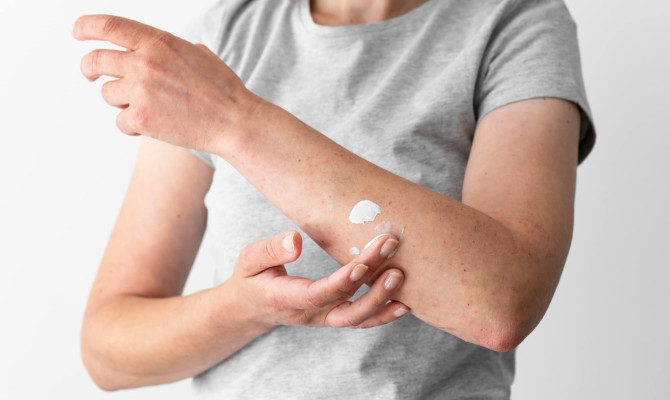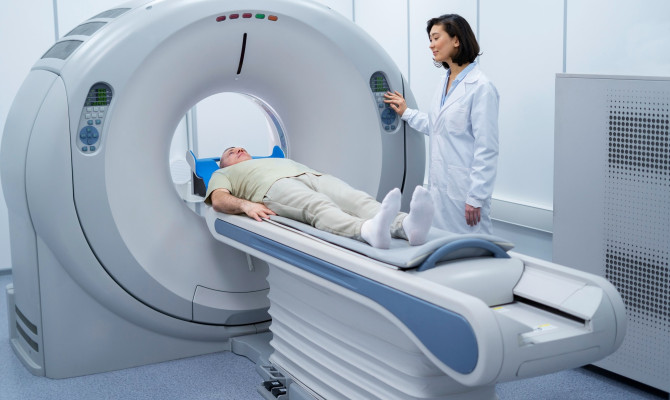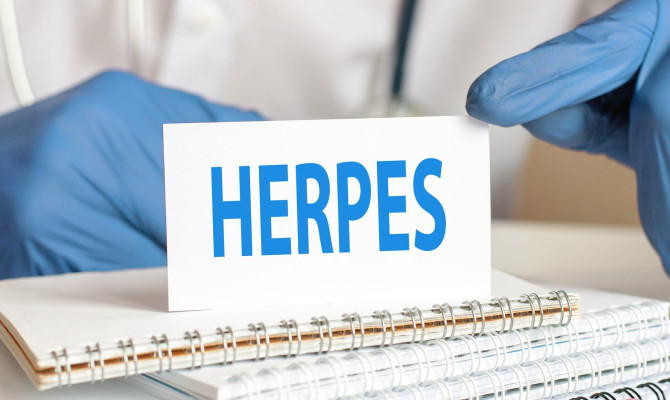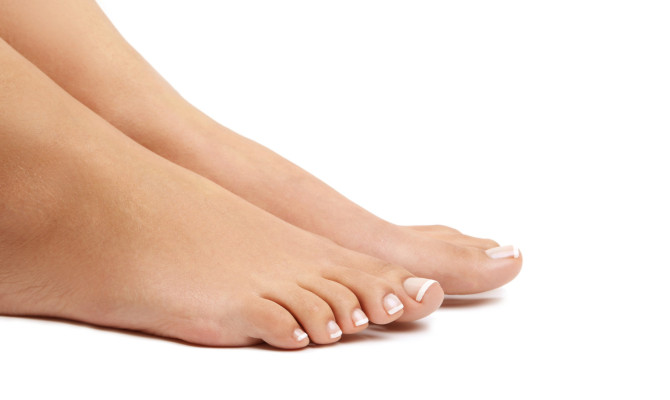All About Parkinson’s Disease: Symptoms, Causes and Treatment

- Parkinson's Disease
- 22 Aug 2023
Overview
About Parkinson’s disease
Parkinson’s disease is a neurodegenerative disorder which is progressive in nature i.e. a movement disorder that has unfortunately affected millions of people worldwide. It is characterized by a wide range of motor and non-motor symptoms that can drastically alter the patients quality of life. Symptoms generally appear slowly, with tremors at rest being a common symptom among many patients. Later muscle stiffness and slowing down of movements may also be observed.1Overview| Researched based study from Aans.org
In this comprehensive article, we will delve into the various aspects of Parkinson’s disease which includes its causes, symptoms, diagnostic methods, treatment options, and ongoing research advancements.

Prevalence
- Parkinson’s disease is a chronic neurological condition which highly impacts movement. After Alzheimer’s disease, it is the second most common neurodegenerative disorder, with an estimated prevalence rate of about 1% of the population over the age of 60.
- Every year almost 60,000 estimated new cases are observed in the U.S. which add to the 1.5 million Americans already affected by the disease.1Overview| Researched based study from Aans.org
- Although the disease is mostly seen in cases above 50 years, few cases have been reported in people even in their 40’s and even 30’s. Canadian-American actor and activist Michael J. Fox was reported to be diagnosed with this condition at 30 years of age. Even late professional heavyweight boxer Mr. Muhammed Ali suffered for this condition in his later years.
Symptoms
Symptoms and Clinical Presentation of Parkinson’s disease
A patient with Parkinson’s disease may show:
- Motor Symptoms
- Non-Motor Symptoms
Motor Symptoms
The motor symptoms of Parkinson’s disease include:
- Resting tremors (tremors that occur when the muscles are at rest)
- Muscle rigidity (stiffness and resistance to movement)
- Bradykinesia (slowness of movement)
- Postural instability (difficulty maintaining balance).
These symptoms which often are initially seen unilaterally can later be seen on both sides as the disease progresses.2Symptoms| Researched based study from Nhs.uk
Non-Motor Symptoms
These may include:
- Impaired Cognition
- Certain mood disorders (such as anxiety and depression)
- Disturbed sleep cycle
- Dysfunction of A.N.S (Autonomic Nervous System ) which leads to problems with blood pressure regulation, impaired digestion and gut mobility, and loss of bladder control)
- Abnormalities in appreciating sensory stimuli.
- Difficulty while speaking and swallowing
- Easy fatigability which may be associated with pain.2Symptoms| Researched based study from Nhs.uk
Causes
Causes and Risk Factors
Causes of Parkinson’s disease are
- Genetic factors
- Environmental factors
- Age
- Gender
Genetic Factors
- While most cases of Parkinson’s disease are idiopathic i.e. without any particular known cause, about 10% to 15% of cases have been linked to a genetic component.
- Mutations in specific genes, such as SNCA, LRRK2, PARK2, and PINK1, have been closely linked to the familial inheritance of the disease.
- Genetic testing is therefore highly crucial when there is a family history of Parkinson’s.
Environmental Factors
- Chronic exposure to certain environmental pollutants which includes industrial chemicals and toxins have been closely linked to increased risk of developing Parkinson’s disease.
- Pesticides, herbicides, heavy metals, and certain industrial chemicals are among the potential environmental risk factors. Further investigation into these factors are essential to further understand their role in disease development.2Causes| Researched based study from Nhs.uk
Age
- Advanced age is the most significant risk factor for developing Parkinson’s disease, as the majority of cases occur in individuals over the age of 60 years.
Gender
- Men are also considered slightly more likely to develop Parkinson’s disease than women, although the reasons for this gender disparity are not yet fully understood and further research into this needs to be undertaken.
Diagnosis
Diagnosis and Differential Diagnosis of Parkinson’s disease
Clinical Evaluation
- Diagnosing Parkinson’s disease involves a highly thorough medical history along with neurological examinations.
- Presence of bradykinesia, resting tremors and rigidity is extremely crucial for making an accurate diagnosis.
- Neurologists also suggest the response to levodopa therapy as a diagnostic tool.
Neuroimaging Techniques
- Unfortunately, there are no specific diagnostic tests for Parkinson’s disease. However many neuroimaging techniques such as magnetic resonance imaging (MRI) and dopamine transporter (DAT) scans can help support the diagnosis. These imaging techniques are also valuable to rule out other conditions that may mimic Parkinson’s symptoms.3Diagnosis| Researched based study from Clevelandclinic.org
Differential Diagnosis of Parkinson’s Disease
Several conditions can present with symptoms similar to Parkinson’s disease thus making differential diagnosis essential. Some of the conditions that need to be considered include
- Essential tremors
- Drug-induced Parkinsonism
- Vascular Parkinsonism
- Atypical parkinsonian disorders such as multiple system atrophy (MSA) and progressive supranuclear palsy (PSP).3Diagnosis| Researched based study from Clevelandclinic.org
Treatment
Treatment Options for Parkinson’s disease
Multidisciplinary Approach
- The management of Parkinson’s disease requires a multidisciplinary approach involving various healthcare professionals which includes neurologists, movement disorder specialists, physical therapists, occupational therapists, speech therapists, and psychologists. Such collaborative care ensures comprehensive treatment which addresses both motor and non-motor symptoms.
Medication Therapy
- Pharmacological interventions form the cornerstone of Parkinson’s disease management.
- Medications are aimed to alleviate symptoms by replenishing dopamine or modulating other neurotransmitters in the brain. L-Dopa therapy (Levodopa) is one of the most commonly prescribed drug for Parkinson’s.4Treatment| Researched based study from Nia.nih.gov
Surgical Interventions
- In certain cases where medication therapy fails to provide adequate symptom control, surgical interventions may be considered as an alternative.
- Deep brain stimulation (DBS) is a procedure that involves implanting electrodes in certain areas of the brain to modulate abnormal neural activity. It has shown promising results in managing motor symptoms and reducing complications due to medication.
Rehabilitation Therapy
- Physio therapy, occupational therapy, and speech therapy are highly valuable in improving mobility, coordination, and communication in individuals with Parkinson’s disease. These therapies aid in strengthening muscles, improving balance, and enhancing activities of daily living (ADLs).4Treatment| Researched based study from Nia.nih.gov
Complementary and Alternative Therapies
- Many individuals suffering with Parkinson’s disease explore complementary and alternative therapies to manage their symptoms. These include use of herbal supplements along with practices such as Tai chi and yoga. Acupuncture technique and Yoga may also be of great value in few individuals. While these approaches may provide symptomatic relief for few individuals, it is essential to discuss their use with healthcare professionals and to ensure that they do not interfere with prescribed medications.
Management of Symptoms
A key component of Parkinson’s disease treatment is symptom management.
Management of Motor symptoms
L-Dopa(Levodopa) Therapy
- This is typically considered the most effective drug for managing the motor symptoms associated with Parkinson’s disease. It is typically administered in combination with a peripheral decarboxylase inhibitor such as a drug known as Carbidopa to enhance its absorption and prevent peripheral side effects. However, long-term use of levodopa can be associated with motor fluctuations and dyskinesia’s which are unintentional, involuntary movements.
Dopamine Agonists
- These drugs directly stimulate dopamine receptors in the brain and nervous system thus mimicking the effects of dopamine. In younger patients, they are often used as initial therapy or as adjunct therapy alongside levodopa. Dopamine agonists can be effective in managing motor symptoms and reducing the risk of motor complications associated with levodopa therapy. Bromocriptine is the most commonly used Dopamine agonist.
MAO-B Inhibitors
- Monoamine oxidase-B (MAO-B) inhibitors, includes drugs such as selegiline and rasagiline. These drugs typically work by inhibiting the enzymatic breakdown of dopamine. By doing so, they increase dopamine levels and therefore help to alleviate motor symptoms.
COMT Inhibitors
- Catechol-O-methyltransferase (COMT) inhibitors include drugs such as entacapone and tolcapone, which prolong the effect of levodopa. They act by inhibiting the enzyme that breaks it down. Therefore by extending the availability of levodopa, COMT inhibitors help reduce motor fluctuations and improve overall symptom control.
Other Pharmacological Agents
- In addition to the above mentioned medications, other pharmacological drugs may be used to manage specific motor symptoms associated with Parkinson’s disease. These include anticholinergic medications to reduce tremors, amantadine to alleviate dyskinesias, and antipsychotic medications to address psychosis that can occur in advanced stages of the disease.5Treatment| Researched based study from Nlm.nih.gov
Management of Non-Motor Symptoms
Dementia and Impaired Cognition
- These can occur in later stages of Parkinson’s disease. Management strategies may include cognitive rehabilitation, medications to enhance cognition, and supportive interventions to optimize daily functioning and quality of life.
Mood Disorders
- For mood disorders such as anxiety and depression, treatment usually involves using a combination of drugs, psychotherapy, and changes in lifestyle.
- Antidepressant and anti-anxiety medications may be prescribed, but careful consideration is needed to avoid drug interactions and potential worsening of motor symptoms.
Sleep Disturbances
- Sleep disturbances, such as insomnia and rapid eye movement sleep behavior disorder (RBD), are prevalent in Parkinson’s disease.
- Non-pharmacological interventions include measures such as establishing a proper sleep schedule to elevate the quality of sleep along with performing relaxation techniques such as yoga and meditation.
Autonomic Dysfunction
- Autonomic dysfunction in Parkinson’s disease can manifest as orthostatic hypotension (low blood pressure upon standing), gastrointestinal symptoms (constipation, difficulty swallowing), and urinary dysfunction.
- Lifestyle modifications, dietary adjustments, and medications can be employed to manage these symptoms effectively.
Emerging Therapies and Research Advances
- Disease-Modifying Strategies
- Stem Cell Therapy
- Gene Therapy
- Deep Brain Stimulation (DBS)1Treatment| Researched based study from Aans.org
- Use of Artificial Intelligence and Digital Health
Lifestyle
Lifestyle Modifications and Supportive Care
Exercise and Physical Activity
- Regular exercise and physical activity have shown positive effects in managing Parkinson’s symptoms and improving overall well-being.
- Aerobic exercises, weight training, balance exercises, and activities like dancing or tai chi can help improve mobility, strength, and mind – muscle coordination.6Lifestyle| Researched based study from Hopkinsmedicine.org
Nutritional Considerations
- Proper diet and nutrition plays a vital role in managing symptoms and supporting overall health in Parkinson’s disease. Therefore consuming a balanced diet which is rich in veggies, healthy fatty acids, vitamins, whole grains is essential.
- Some studies suggest the consumption of foods rich in antioxidants and omega type 3 fatty acids are associated with lowered risk of developing Parkinson’s disease.
- Use of turmeric has been associated with lowered risk of Parkinson’s disease as it is not only an antioxidant but also inhibits clumping of Alpha Synuclein which is the protein which forms Lewy bodies.
Mental Health Support
- Parkinson’s disease can severely impact a patient’s mental and emotional state. Seeking support from family, friends, support groups, and mental health professionals can help individuals cope with the emotional impact of the disease.
- Psychotherapy and counseling may be beneficial in addressing anxiety, depression, and stress management.
Caregiver Support
- Parkinson’s disease not only affects the individuals diagnosed but also places significant burdens on caregivers.
- Supportive interventions, respite care, and caregiver support groups can provide essential resources and emotional support for caregivers.
Outlook
The Outlook
Parkinson’s disease remains a challenging neurodegenerative disorder, but significant progress has been made in understanding its causes, symptoms, and treatment options. Ongoing research into disease-modifying therapies, stem cell therapy, gene therapy, and the role of AI and digital health holds promise for advancing Parkinson’s disease management. A comprehensive approach that combines medication, therapy, lifestyle modifications, and support systems can help individuals with Parkinson’s lead fulfilling lives and manage their symptoms effectively. By raising awareness, supporting research efforts, and fostering a supportive community, continuous strides can be made in improving the lives of those affected by Parkinson’s disease, therefore moving closer to a world free from its devastating impact.
Any feedback on this article?
 This Articles content was accurate
This Articles content was accurate Very Informative Article
Very Informative Article I have a question or a comment
I have a question or a comment
 This article contains inaccurate content
This article contains inaccurate content This article was not helpful
This article was not helpful I have a question or a comment
I have a question or a comment
We appreciate your helpful feedback!
Checkout our social pages
References
-
American association of neurological surgeons
Parkinson’s Disease | Overview
-
National Health Service
Parkinson’s Disease | Symptoms | Causes
-
Cleveland Clinic
Parkinson’s Disease | Diagnosis
-
National Institute of Aging
Parkinson’s Disease: Causes, Symptoms, and Treatments | Treatment
-
National Library of Medicine
Treatment Options for Motor and Non-Motor Symptoms of Parkinson’s Disease | Treatment
-
John Hopkins Medicine
6 Medication-Free Ways to Feel Better with Parkinson's Disease | Lifestyle





































